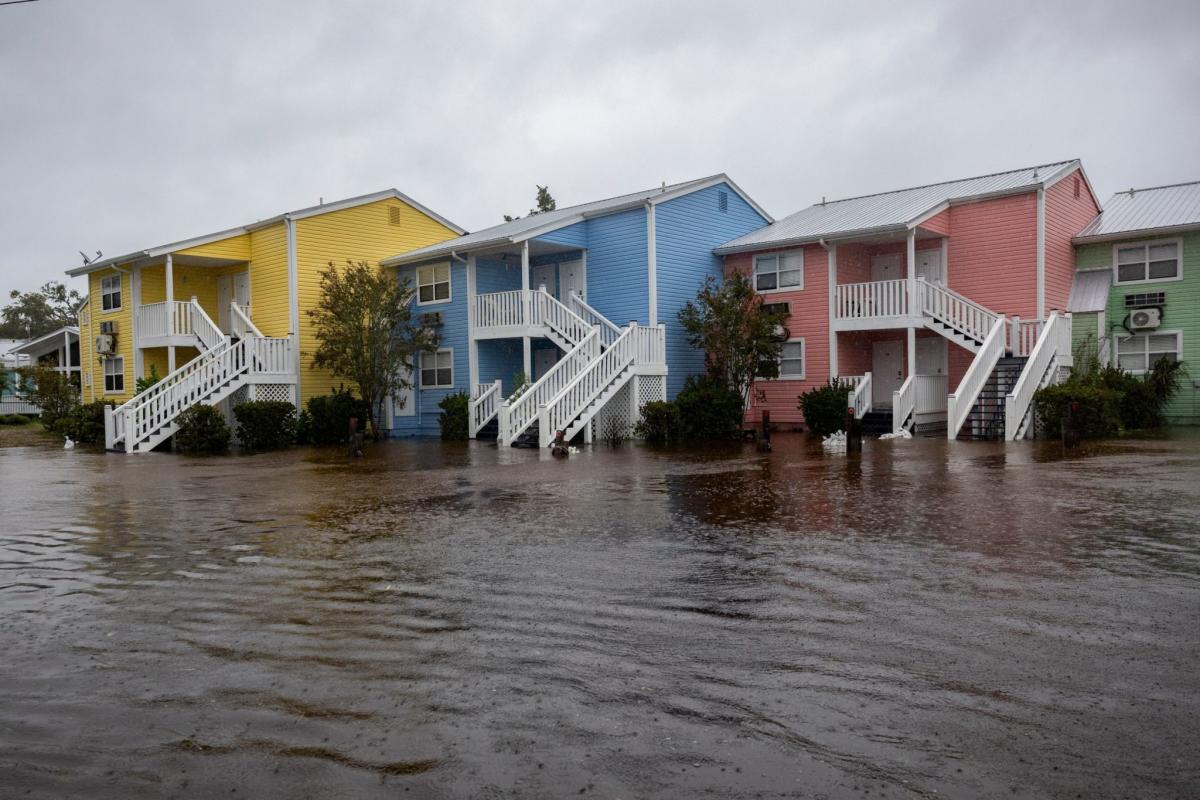Uninsurable homes are selling for all cash at a deep discount

There’s an incredibly risky two-pronged trend in the housing market. Insurance companies are refusing to cover properties because they’re located in severe weather zones or because the housing stock is old. And banks won’t give you a mortgage because of the same risk. The outcome is a further divided housing market—traditional homes that can be insured and mortgaged and a burgeoning segment of properties that can only be sold for cash and at a deep discount, if at all.
An estimated $1.6 trillion in property value of uninsured homes was at risk three years ago and 6.1 million homeowners were uninsured, concluded a report published this year from the Consumer Federation of America. It’s only grown worse since then, even if that is the most recent data available. And yet, such homes can still sell. According to Axios, “uninsurable homes still change hands on the housing market.” You can’t take a mortgage out on them, but you can pay all-cash, and probably receive a steep discount, the publication reported.
I don’t have to tell you how much of a risk it is to have an uninsured property. It may be less so if you’re a billionaire who wants a stunning view and has cash to burn. But for typical Americans living in California, Florida, Texas, or other states vulnerable to severe weather, not so much. More often than not, these are low-valued homes and low-income households that go uninsured. They may choose to go without insurance if they can’t afford rapidly rising premiums or if they simply can’t find an insurer to cover them. Even so, places such as California and Florida have their own last resort forms of coverage, whether it be the FAIR Plan for the former and Citizens for the latter.
What you need to know is there’s an insurance crisis unraveling across the country, especially in those states mentioned above. In California, property insurers are capping the number of policies they write or refusing to write new ones. In Florida, multiple home insurers have fled the state. Insurance woes have made it much harder for homeowners and homebuyers dealing with skyhigh prices and mortgage rates.
The president of CoreLogic’s global insurance solutions business, Garret Gray, once told me his house in a Los Angeles canyon was nearly uninsurable. “It’s got a really bad CoreLogic fire score,” he said. He almost backed out of the deal before he made some changes to make the home insurable. The thing is, some people might not back out of the deal. Instead, they might attempt to get a better deal from the seller.
Then there’s Jason Damm, an assistant professor of professional practice of finance at the University of Miami and a landlord in the city. He once told me that after renewing his insurance earlier that year, his premium went up. That was before the insurer sent him a notice that it was pulling out of the state and his policy was canceled. At the time, he was without insurance and hadn’t decided what to do because of how costly and difficult it was to find coverage. “I don’t have insurance on the house, which is quite dangerous,” Damm previously said. “I’ve been looking. It’s very expensive, so I’m trying to decide what to do. It’s a huge problem. I mean, I don't know what I’m going to do with it, whether I’m going to try and find a policy or just go without insurance.”
It’s not just him. Miami happens to have the highest share of uninsured homeowners, about 15% worth, and its home values haven’t fallen at all. All the while, the city is extremely vulnerable to climate related events, which costs the entire country billions of dollars a year. So it seems people are still buying and selling homes in Miami, insured or uninsured.
This story was originally featured on Fortune.com
Breaking news
See all






